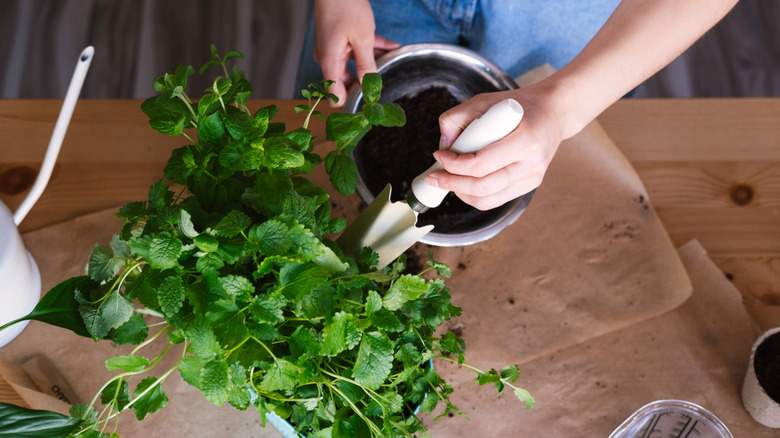Chocolate mint (Mentha x piperita f. citrata) is a type of peppermint with purplish-brown stems. It also has a smell that many people find reminiscent of a mix of peppermint and cocoa, with some also claiming that it has a slightly-orange fragrance. It’s an ideal plant for those looking to jump on the edimental gardening trend. The plants are full of beauty, scent, and flavor, and if allowed to flower in the summer, they are also a big hit with pollinators. Mint has a reputation for being easy to grow, but it certainly isn’t invincible. Mistakes including providing the wrong amounts of light and water, using the wrong soil type, and ignoring signs of pests and diseases can quickly destroy your beautiful and delicious plant.
Chocolate mint is sterile, so it can’t be grown from seed. Luckily, however, young plants are readily available at garden centers, or you could easily grow it from divisions or cuttings. A perennial that’s hardy in USDA growing zones 5 through 9, chocolate mint can quickly become invasive when grown in the landscape, so be sure to place it in containers. This cultivar is also a popular choice for growing indoors in kitchen herb gardens during winter months.
Mistakes with care requirements can decimate chocolate mint plants

A common mistake many make with chocolate mint (along with other mint types) is either under or over watering the plant. Underwatered mint can quickly shrivel and die, especially if it is grown in full sun. Don’t forget that container plants generally dry out more quickly than those grown in the ground, and since this invasive plant needs to be in a container, it could dry out faster. Overwatered mint, on the other hand, can suffer from root rot, particularly if it is planted in poorly-draining soil. This is why you must use a proper potting mix instead of simply filling your mint’s container with garden soil, which compacts in containers. This could damage or even kill your mint by preventing water and air from circulating. Use a good-quality potting mix and check the moisture level of the top layer of soil before watering to ensure your mint gets the exact amount of water it needs.
Additionally, many also make the mistake of not giving their chocolate mint the ideal amount of sunlight, which is 4 to 6 hours daily. While mint grows better in low light than many other types of herbs, insufficient light can make the plant more vulnerable to disease. Mint grown in low light also tends to become stringy and leggy instead of beautiful and bushy. If you are growing chocolate mint inside, be sure to place it in a southern-facing window or provide it with grow lights.
Forgetting to check your chocolate mint for pests and diseases can devastate the plant
Chocolate mint is generally a healthy plant. However, just like other mint cultivars, it can be harmed or killed by mint rust, a fungal disease that can easily destroy your plants. Those suffering from rust develop brown spots and may lose their leaves, and a huge mistake some mint gardeners make is ignoring these signs. If you notice the infection and act quickly to remove the damaged leaves, the rest of the plant may survive. Unfortunately, mint rust is contagious, so it’s best to destroy severely-infected plants to prevent the disease from spreading.
Further, while minty scents generally repel rabbits, deer, and other mammals, that doesn’t mean your chocolate mint plant isn’t vulnerable to insects like aphids, thrips, and spider mites, and a common mistake is avoiding signs of these critters. Examine your plants regularly so you can catch and treat any problems early on. For mild infestations, you may be able to remove the bugs by hand or spray them off using water. For more severe infestations, neem oil, a natural insecticide that’s effective against aphids and spider mites, can be helpful. However, while it is all-natural, neem oil can cause skin irritation and potentially hurt beneficial insects. Always be sure to read the instructions thoroughly before applying any pesticides. If you bring your chocolate mint plants inside for winter, inspect them thoroughly for pests and diseases beforehand.